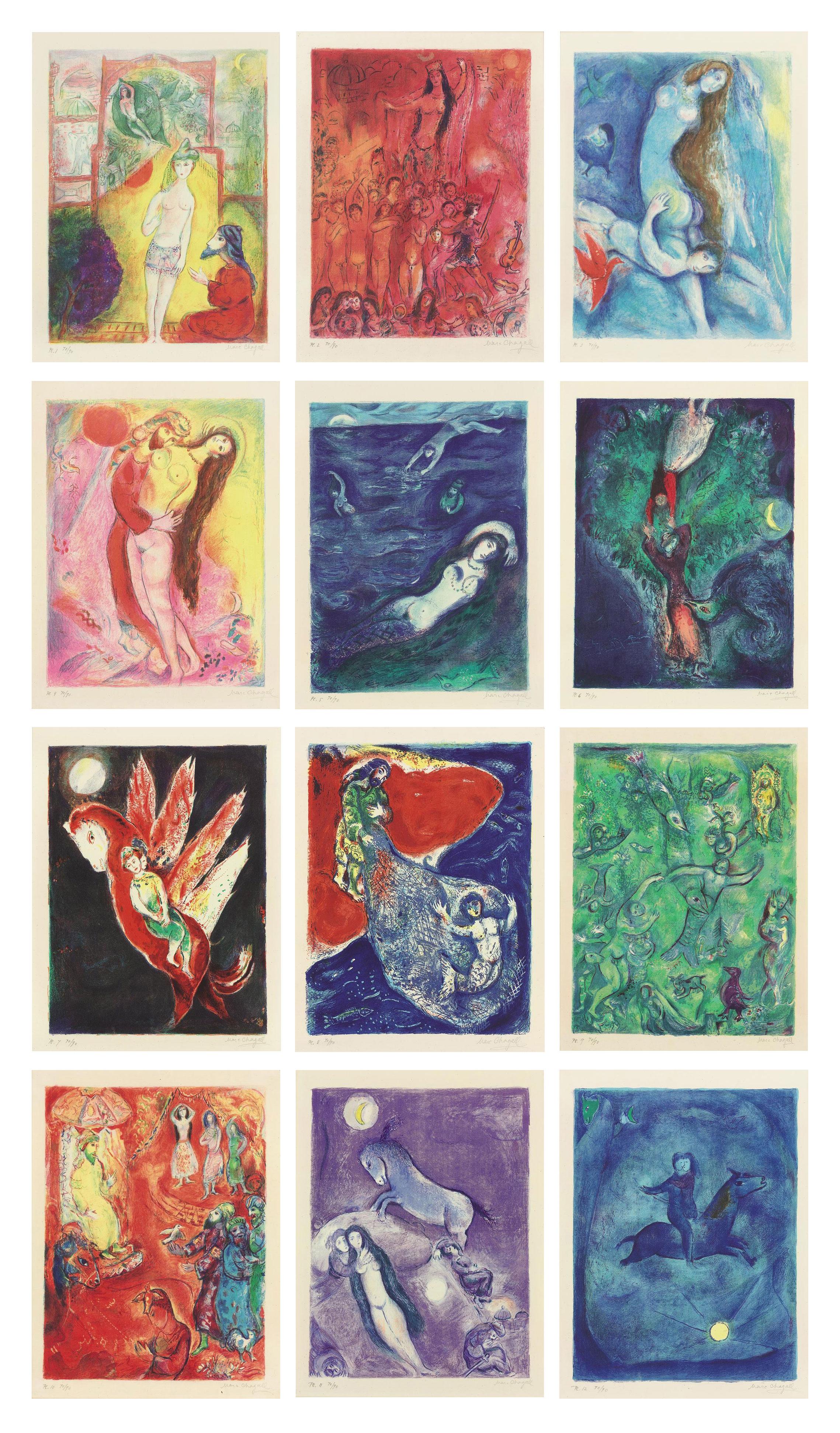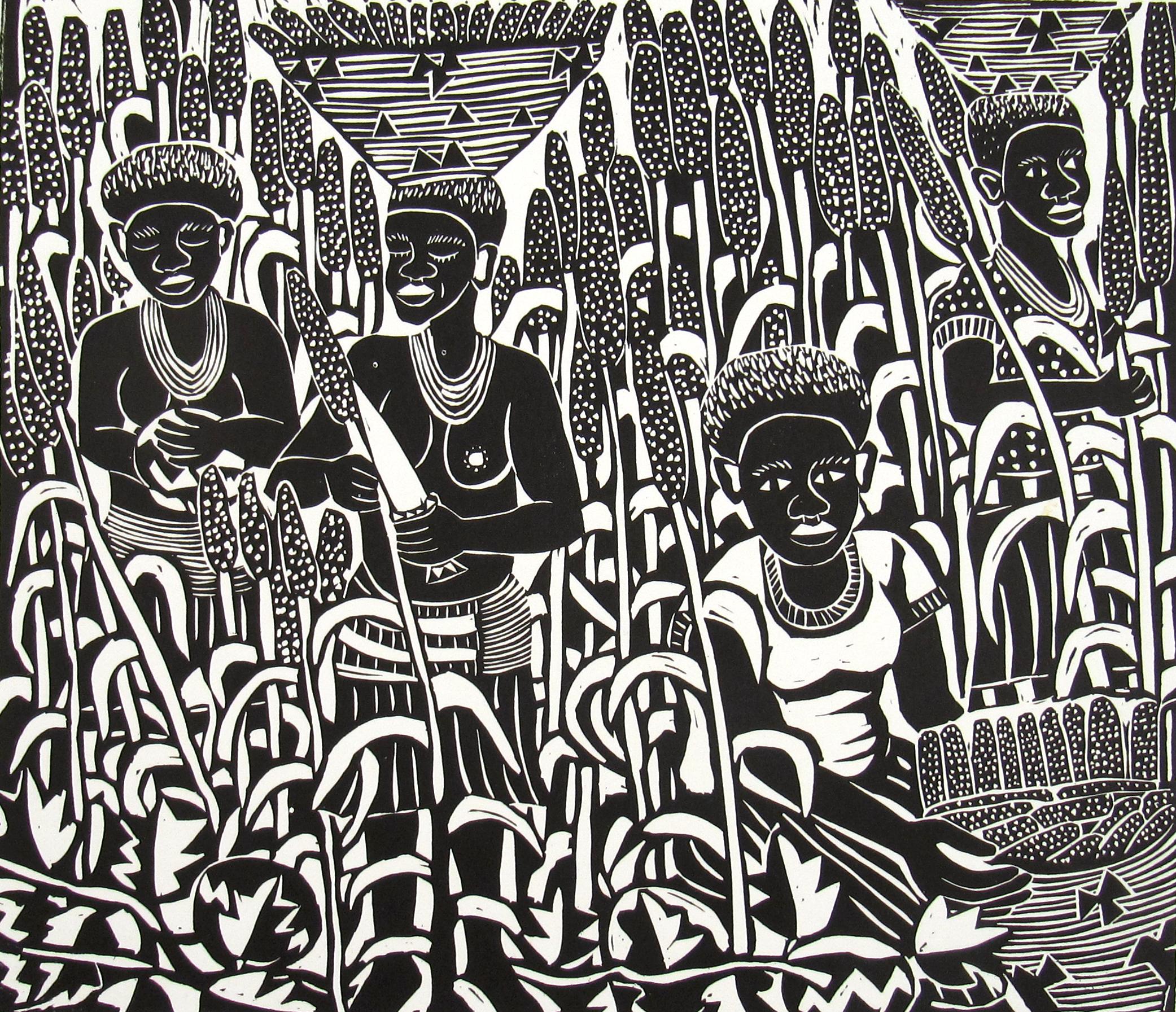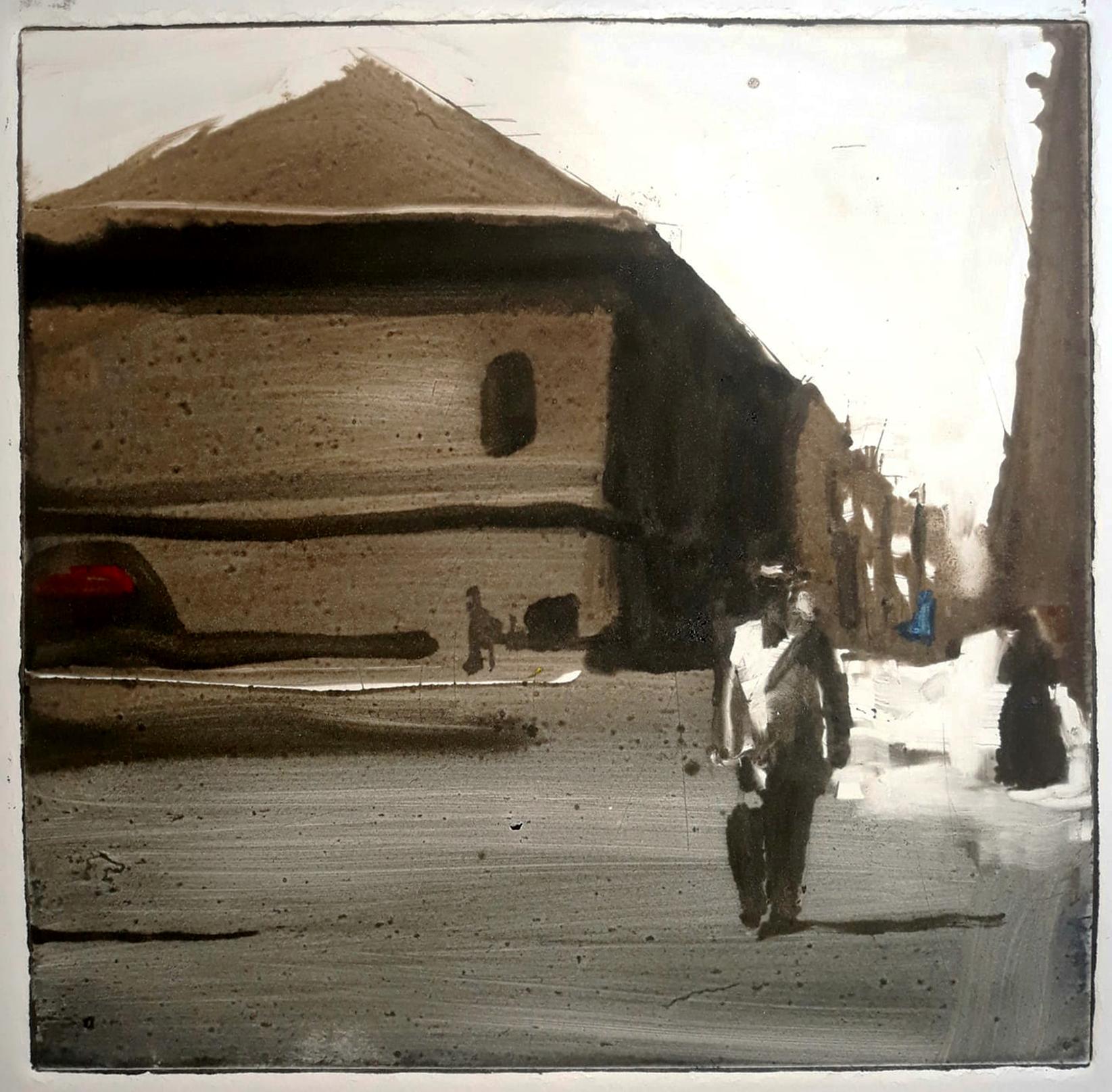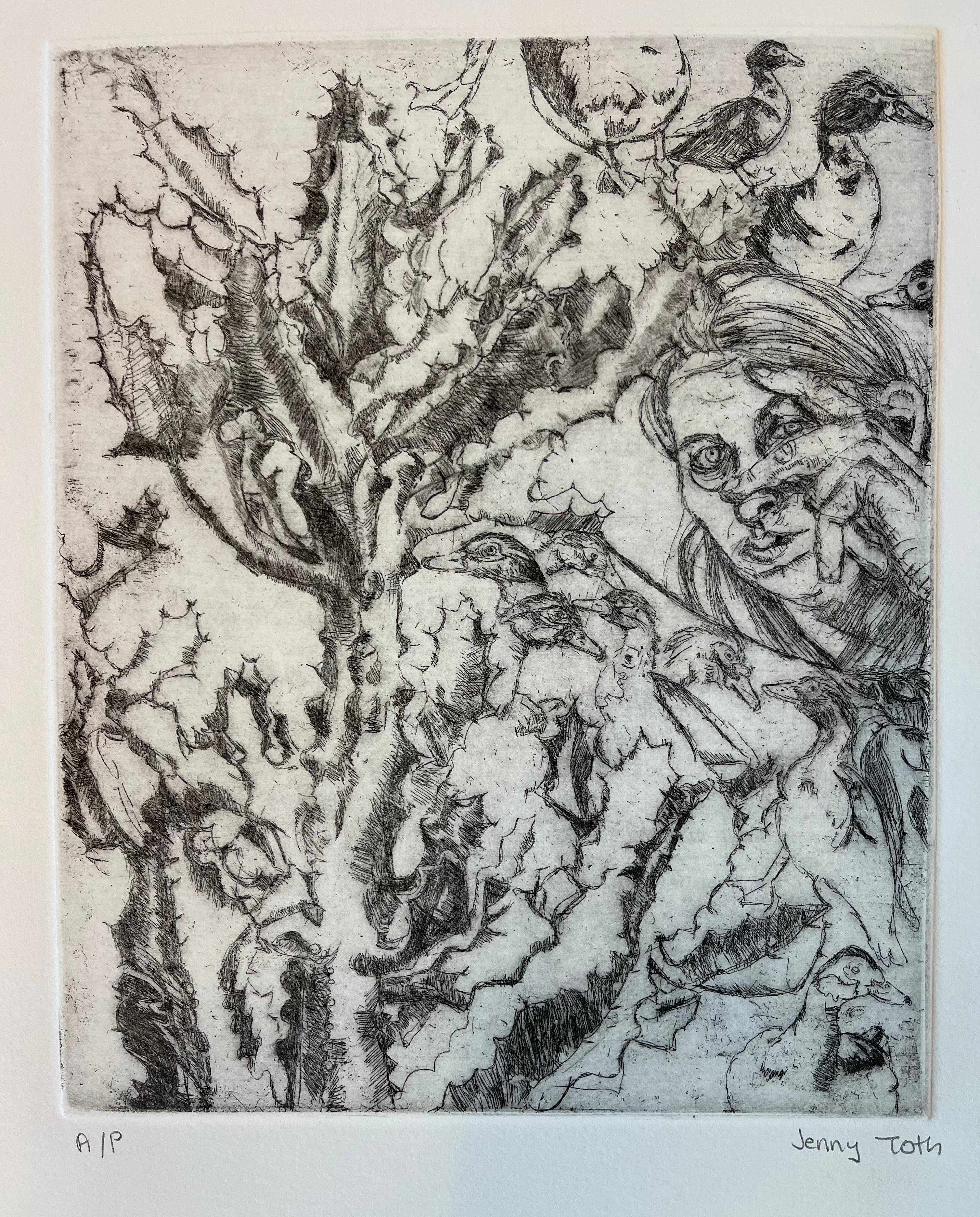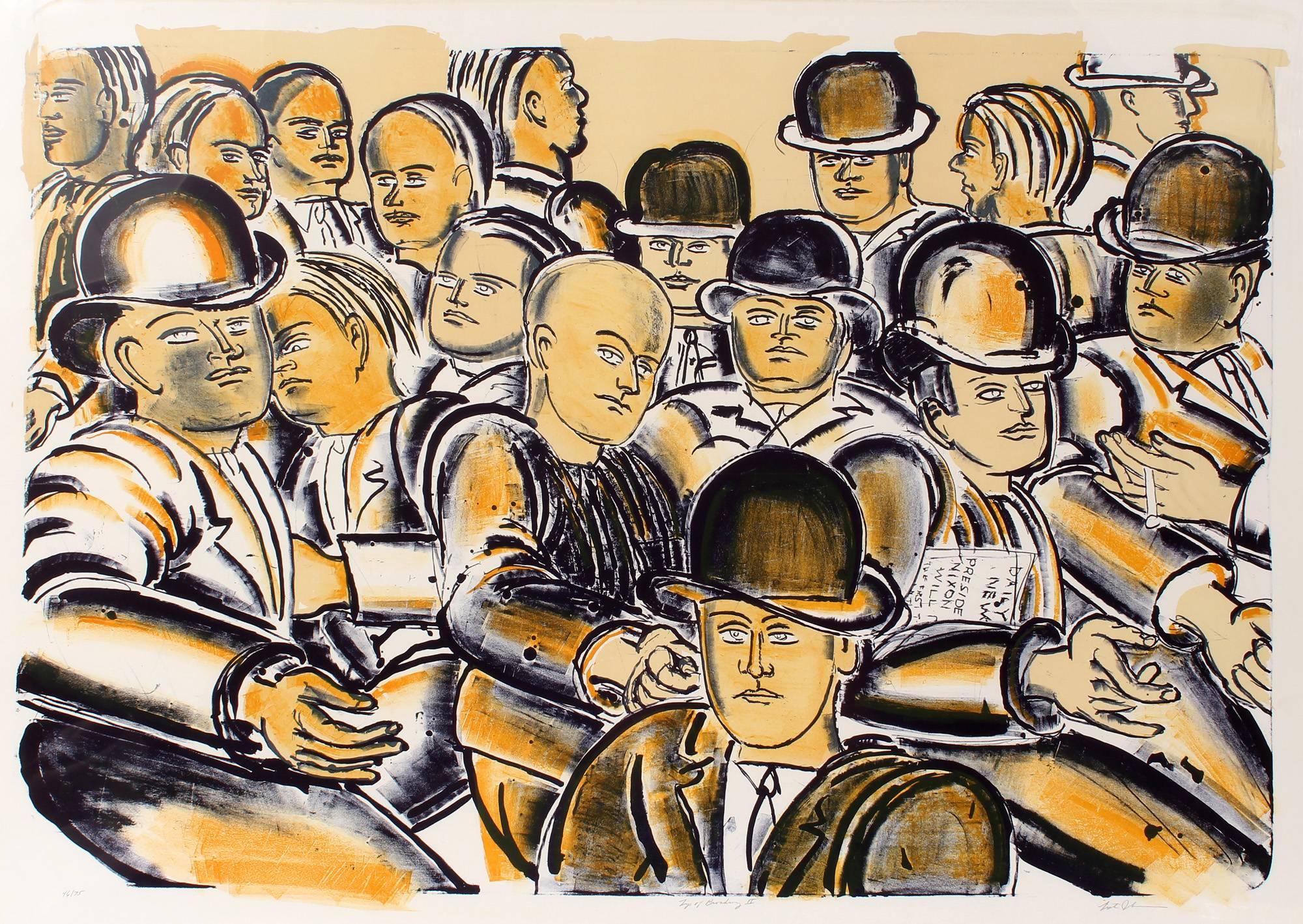Items Similar to Expressionist Windy Day Portrait
Want more images or videos?
Request additional images or videos from the seller
1 of 5
Arthur KolnikExpressionist Windy Day Portrait
About the Item
Arthur Kolnik was born in Stanislavov, a small town in Galicia, which was then part of the Austro-Hungarian Empire. His father, who was originally from Lithuania, worked as an accountant and his mother, who was originally from Vienna, ran a shop. In 1905, he discovered Yiddish literature in Czernowitz, on the occasion of the first conference on Yiddish language, which was organized by several writers including I. L. Peretz, Cholem Aleichem, Shalom Asch, and Nomberg.
In 1909, Kolnik joined the School of Fine Arts in Krakow and took classes taught by Jacek Malezcewski and Joseph Mehoffer, a portrait painter and an artist who produced stained-glass windows in Fribourg (Switzerland).
He was mobilized in the Austrian army in 1914. He was wounded in 1916 and repatriated to Vienna, where he met the Judaic painter Isidor Kaufmann. In 1919, Kolnik settled in Czernowitz, which was then annexed by Romania. There, he met writer and poet Itzik Manger and storyteller Eliezer Steinberg for whom he produced several illustrations. In 1920, Kolnik left for the United States, bringing fifty paintings with him, after he saw an advertisement in a Yiddish newspaper about an exhibition of Jewish Polish painters in New York. He found out that it was too late for his Judaica paintings to be exhibited in this exhibition, but he luckily met photographer Alfred Stieglitz who found him a gallery and organized an exhibition of his work.
In 1931, Kolnik arrived in Paris with his family. For several years, he gave up painting. His wife taught piano and he drew for fashion journals. In 1934, he produced an album of twenty-four engravings, Sous le chapeau haut de forme (Underneath the Top Hat), which was prefaced by Henri Barbusse. He later produced twelve plates for Grosbart’s Les Personnages (The Characters). In 1948, he illustrated I.L. Peretz’ Métamorphoses d’une mélodie (Metamorphosis of a Melody).
In 1940, he was interned at the Récébédou camp in Haute-Garonne with his wife and daughter.
Following the war, Arthur Kolnik stayed in London, New York, Krakow, Vienna, Riga, and Buenos Aires, where he exhibited his work. He contributed to the journal Nos Artistes (Our Artists). In 1955, in New York, he was awarded the Chaban prize for his graphic work. In 1962, his fist solo exhibition took place in Paris at the Galerie Creuze. That same year, he traveled to Israel for the first time.
- Creator:Arthur Kolnik (1890 - 1972, Polish, Ukrainian)
- Dimensions:Height: 14 in (35.56 cm)Width: 10.5 in (26.67 cm)
- Medium:
- Movement & Style:
- Period:
- Condition:
- Gallery Location:Surfside, FL
- Reference Number:1stDibs: LU38210500722
About the Seller
4.9
Platinum Seller
These expertly vetted sellers are 1stDibs' most experienced sellers and are rated highest by our customers.
Established in 1995
1stDibs seller since 2014
1,550 sales on 1stDibs
Typical response time: 1 hour
- ShippingRetrieving quote...Ships From: Surfside, FL
- Return PolicyA return for this item may be initiated within 3 days of delivery.
More From This SellerView All
- Shtetl Scene Expressionist woodcutBy Arthur KolnikLocated in Surfside, FLArthur Kolnik was born in Stanislavov, a small town in Galicia, which was then part of the Austro-Hungarian Empire. His father, who was originally from Lithuania, worked as an accoun...Category
1930s Expressionist Figurative Prints
MaterialsPaper
- Judaica Jewish Shtetl Etching Hasidic Rabbi at Study Vintage Chassidic PrintBy Paul JeffayLocated in Surfside, FLOlder Chassidic rabbi learning with open book, Judaica, Jewish scenes from a ghetto. Saul Yaffie, a.k.a. Paul Jeffay, (1898–1957) was a Scottish Jewish artist. Known for his charming French street scenes as well as his judaica work. This is signed in the plate and dated 1931 in the print. This is done in a style similar to the works of the early Bezalel School artists Hermann Struck and Jakob Steinhardt. This lithograph, by artist Paul Jeffay depicts a Judaic Shtetl interior scene with great charm and sensitivity. Saul Yaffie was born in Blythswood, Glasgow on 29 April 1898. His mother was Kate Yaffie (née Karkonoski), and his father, Bernard Yaffie, was a master tailor. Like many Russian Jews, Kate and Bernard Yaffie fled persecution in Russia during a wave of anti-Jewish pogroms triggered by the assassination of Tsar Alexander II in 1881. Saul's father was naturalised as a British citizen by the time that Saul himself was three; a Bernard Yaffie is recorded as living at Abbotsford Place in the old Gorbals, where the young Saul spent the early years of his childhood. The Yaffies were not unique in their situation: the Gorbals was the centre of Scotland's Jewish community and home to a large proportion of Glasgow's immigrants throughout the early 20th century. Over time, there was a movement to some of the more affluent communities in Glasgow, such as Pollokshields and Garnethill, as many Jewish families gradually improved their social and economic situation. Like these, the Yaffies also experienced a time of good fortune, moving to a more agreeable address on Sinclair Drive, Cathcart as Bernard's tailoring business prospered. Saul attended day classes in drawing and painting, modelling, and life drawing at The Glasgow School of Art from 1912 to 1919. During the First World War, he was required to interrupt his studies to serve in the King's Own Scottish Borderers in 1916/17. Although subject to military conscription, Yaffie reached the rank of corporal during his service. Prior to his conscription Yaffie engaged in munitions work, something that was recorded in the GSA's student registers. The post-war economic depression that affected the country during the 1920s, also affected the Yaffie family directly: Bernard Yaffie's business suffered greatly, and the family eventually emigrated to Canada. Saul did not emigrate with his family, choosing instead to stay in Europe, and relocate to jazz age Paris where he continued his artistic practice. Now married, Saul sought to escape persecution in Europe by returning to the UK before the Second World War with his wife, Estusia. The two settled in Manchester, but returned to France after the war. In his memoires ‘Bronze in My Blood’, German-born sculptor Benno Schotz describes a Saul ‘Yaffe’, one of only three other Jewish students who attended The Glasgow School of Art at the time. (Schotz himself was exempt from joining the forces because he was ‘not yet a British subject’, and was engaged in war work in the drawing office of John Brown’s shipyards). On the outbreak of the war, Schotz writes, Yaffie won a poster competition to be displayed in Glasgow tramcars at the beginning of the 1914-18 war – his winning design depicted a woman with a child in her arms, fleeing from a fire behind her. While on leave from service, the young Saul told Schotz he had briefly been stationed in the same unit as Jewish American sculptor Jacob Epstein. This was most likely the 38th Battalion of the Royal Fusiliers, also known as ‘the Jewish Legion’, one of five Jewish battalions raised during WW1. ‘He told me how incongruous it was’, remembers Schotz, ‘to See Epstein scrubbing the floor of their hut, with a large diamond ring on his finger’. His work is included in the collection of the Ben Uri Museum in London along with Lucian Freud, David Bomberg, Mark Gertler, Josef Herman, Jankel Adler, Feliks Topolski...Category
20th Century Expressionist Figurative Prints
MaterialsPaper, Etching
- Purim Holiday Scene Judaica Aquatint Etching American Modernist WPA ArtistBy Ben-Zion WeinmanLocated in Surfside, FLBorn in 1897, Ben-Zion Weinman celebrated his European Jewish heritage in his visual works as a sculptor, painter, and printmaker. Influenced by Spinoza, Knut Hamsun, and Wladyslaw Reymont, as well as Hebrew literature, Ben-Zion wrote poetry and essays that, like his visual work, attempt to reveal the deep “connection between man and the divine, and between man and earth.” An emigrant from the Ukraine, he came to the US in 1920. He wrote fairy tales and poems in Hebrew under the name Benzion Weinman, but when he began painting he dropped his last name and hyphenated his first, saying an artist needed only one name. Ben-Zion was a founding member of “The Ten: An Independent Group” The Ten” a 1930’s avant-garde group, Painted on anything handy. Ben-Zion often used cabinet...Category
Mid-20th Century Expressionist Figurative Prints
MaterialsEtching
- Biblical Prophet Etching American Modernist WPA ArtistBy Ben-Zion WeinmanLocated in Surfside, FLBorn in 1897, Ben-Zion Weinman celebrated his European Jewish heritage in his visual works as a sculptor, painter, and printmaker. Influenced by Spinoza, Knut Hamsun, and Wladyslaw Reymont, as well as Hebrew literature, Ben-Zion wrote poetry and essays that, like his visual work, attempt to reveal the deep “connection between man and the divine, and between man and earth.” An emigrant from the Ukraine, he came to the US in 1920. He wrote fairy tales and poems in Hebrew under the name Benzion Weinman, but when he began painting he dropped his last name and hyphenated his first, saying an artist needed only one name. Ben-Zion was a founding member of “The Ten: An Independent Group” The Ten” a 1930’s avant-garde group, Painted on anything handy. Ben-Zion often used cabinet...Category
Mid-20th Century Expressionist Figurative Prints
MaterialsEtching
- Lithograph Israeli Modernist Judaica, Kibbutz Boy, Bezalel ArtistBy Moshe GatLocated in Surfside, FLA signed and numbered lithograph print. Moshe Gat was born in Haifa in 1935. in 1952 he began his studies at the Bezalel School, in Jerusalem. In 1955 he returned to Haifa, where h...Category
Mid-20th Century Expressionist Figurative Prints
MaterialsLithograph
- Polish French Expressionist Judaica Woodcut Had Gadya from Passover HaggadahBy Arthur KolnikLocated in Surfside, FLArthur Kolnik, Jewish painter and printmaker Ivano-Frankivsk (Ukraine) 1890 - Paris (France) 1972 Arthur Kolnik was born in Stanislavov, a small town in Galicia, which was then part of the Austro-Hungarian Empire. His father, who was originally from Lithuania, worked as an accountant and his mother, who was originally from Vienna, ran a shop. In 1905, he discovered Yiddish literature in Czernowitz, on the occasion of the first conference on Yiddish language, which was organized by several writers including I. L. Peretz, Cholem Aleichem, Shalom Asch, and Nomberg. In 1909, Kolnik joined the School of Fine Arts in Krakow and took classes taught by Jacek Malezcewski and Joseph Mehoffer, a portrait painter and an artist who produced stained-glass windows in Fribourg (Switzerland). He was mobilized in the Austrian army in 1914. He was wounded in 1916 and repatriated to Vienna, where he met the Judaic painter Isidor Kaufmann. In 1919, Kolnik settled in Czernowitz, which was then annexed by Romania. There, he met writer and poet Itzik Manger and storyteller Eliezer Steinberg for whom he produced several illustrations. In 1920, Kolnik left for the United States, bringing fifty paintings...Category
20th Century Expressionist Figurative Prints
MaterialsWoodcut
You May Also Like
- Marc Chagall - Four Tales from the Arabian Nights - COMPLETE SET (12)By Marc ChagallLocated in Los Angeles, CAMarc Chagall (1887-1985) FOUR TALES FROM THE ARABIAN NIGHTS (MOURLOT 36 - 47; CRAMER BOOKS 18) The complete set of twelve lithographs printed in co...Category
Mid-19th Century Expressionist Figurative Prints
MaterialsLithograph, Laid Paper
- Elia Shiwoohamba ( Namibia, 1981 ) Harvesting Time Lino Cut African School 2006By Elia ShiwoohamaLocated in Meinisberg, CHElia Shiwoohamba (* 1981 , Windhoek, Namibia ) Harvesting Time • African School • Linoleum cut • Sheet ca. 34.5 x 43 cm (Image is smaller) • Bottom left numbered 8/50 and titled • ...Category
Early 2000s Expressionist Landscape Prints
MaterialsPaper, Linocut, Woodcut
- Waiting for Buddha, expressionistic female figure, greens, earth tonesBy Tom BennettLocated in Brooklyn, NYAn oil-based ink monotype of an expressive figure turned from the viewer against a patterned green-grey background.Category
2010s Expressionist Figurative Prints
MaterialsArchival Paper, Monotype
- Ghosts of New York 5, mysterious, monochromatic cityscapeBy Tom BennettLocated in Brooklyn, NYOne of a series of oil based monotypes on fine printmaking paper, subtle color design, symbolic and atmospheric figure/figures in cityscapeCategory
2010s Expressionist Landscape Prints
MaterialsMonotype, Archival Paper
- Ducks Quacking, Cactus Peeking, linear style, monochromaticBy Jenny TothLocated in Brooklyn, NYThis is an artist proof aquatint of a woman peeking around a cactus with ducks mysteriously hovering in the upper right corner and a giant beautiful cactus overgrowing. The mood is ...Category
2010s Expressionist Figurative Prints
MaterialsPaper, Ink, Archival Ink, Aquatint
- Tip of Broadway IIBy Lester JohnsonLocated in Buffalo, NYAn original lithograph created by Lester F. Johnson. This work was donated to Hallwalls Contemporary Art Center by the David K. Anderson Charitable Trust. All proceeds from the sal...Category
1970s Expressionist Figurative Prints
MaterialsLithograph, Paper
Recently Viewed
View AllMore Ways To Browse
Vintage Daughter And Father
Window Stay
Portrait Stained Glass
Mother And Daughters Print
Vintage Army Glasses
Vintage Window Stay
Swiss Army
Vintage Fashion Illustration Prints
Twelve Twenty
Vintage Window Illustration
Used Pianos London
Stained Glass Vintage Plates
Vintage Hat Shop
Vintage Hat Shops
Vintage D Piano
Illustration Vintage Camping
The Vintage Hat Shop
Vienna Portrait Plate
